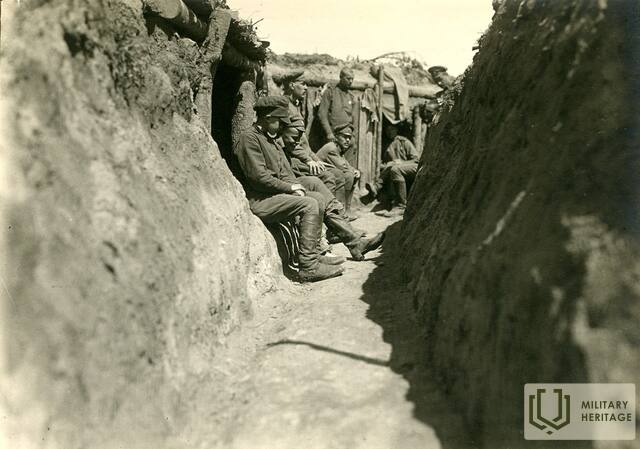Latvijos šaulių pozicijos ir apkasai Tyreliuose
Įtvirtinimas

Latvijos šaulių apkasai ir apkasai Tyreliuose yra Babytės valsčiuje, Mārupe savivaldybėje, netoli Antinių latvių šaulių kapinių ir buvusio vaistų sandėlio. Pirmojo pasaulinio karo metu tai buvo Rusijos imperijos armijos Latvijos šaulių gynybinė pozicija. Smėlėtose kalvose buvo įrengtas apkasų ir paviršinių apkasų kompleksas. Apkasinė arba pozicinė kova – tai geriausias būdas tiksliai apibūdinti Pirmąjį pasaulinį karą ir pabrėžti įtvirtinimų svarbą. Jie buvo pagrįsti karo inžinierių tyrimais, pritaikyti prie aplinkos ir naujų ginklų kūrimo. Kareivio kasdienybė – tai nuolatinis gynybinių įtvirtinimų tobulinimas. Kartais kareiviai apkasams duodavo pavadinimus, kurie primindavo jų namus ir padėdavo pamiršti karo realybę. Apkasų linijos buvo sudėtingos gynybos sistemos, kurias priešui buvo sunku perimti. Tobulėjant ginklams, ši gynyba tapo dar sudėtingesnė. Apkasų stogai buvo sutvirtinami, kad atlaikytų artilerijos sviedinius. Apkasai buvo kasami keičiant schemas ir kryptis, kad sprogimai padarytų kuo mažiau žalos. Judėjimo praėjimuose buvo kišenės, kurios buvo naudojamos kaip trumpalaikės slėptuvės artilerijos ugnies metu, nes jos saugojo kareivius nuo skeveldrų ir nuolaužų. Šiandien dalis įtvirtinimų yra atkurta, ir galite aplankyti 3 restauruotus apkasus ir 100 m ilgio apkasų atkarpą.
Panaudoti šaltiniai ir literatūra:
Vulfs, F. Kaimo įtvirtinimai: konstrukcija. Išleido Valstybės prezidento Čakstės karininkų kurso paskaitų ir vertimų fondas. Ryga: Latvijos mokslas ir literatūra, 1926.
Griffith, P. Vakarų fronto įtvirtinimai: 1914–1918 m., Oksfordas: Osprey, 2004.
Susijusi laiko juosta
Susijusi istorija
Gynybinių pozicijų kūrimas.
Aprašyme nagrinėjamos mūšio lauko įtvirtinimų problemos apskritai. Jis grindžiamas Pirmojo pasaulinio karo patirtimi ir situacija, kai reikėjo organizuoti didelius įtvirtinimų kūrimo darbus.
Kieme rastas admirolui Makarovui skirtas atminimo ženklelis.
Mažas karinis reliktas gali papasakoti didžiulę istorinę istoriją. Ir nors ženklelis simbolizuoja įvykius, vykusius Rusijos-Japonijos karo metu, jis taip pat atskleidžia spalvingą karinę istoriją ir mūsų Latvijos šaulių dalyvavimą kituose kariniuose konfliktuose tiek prieš Nepriklausomybės karus, tiek po jų.






















